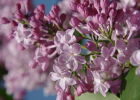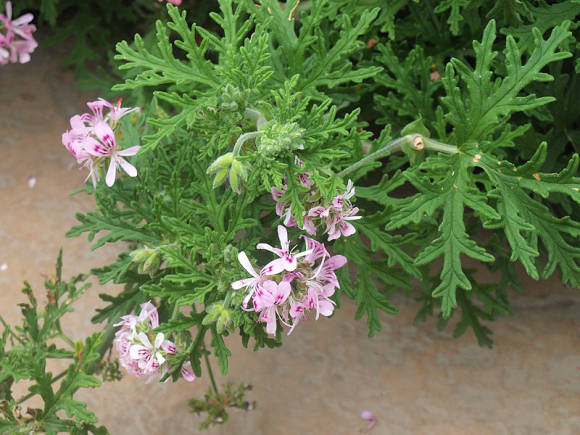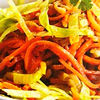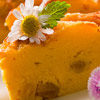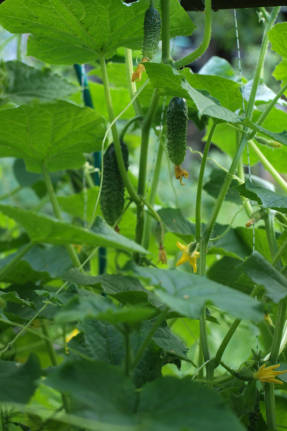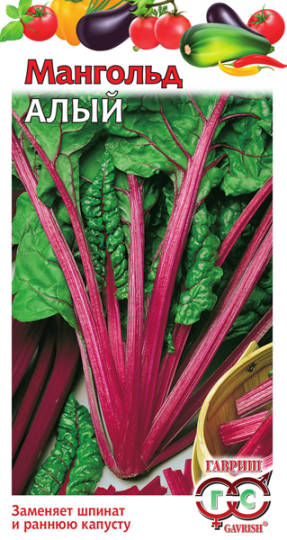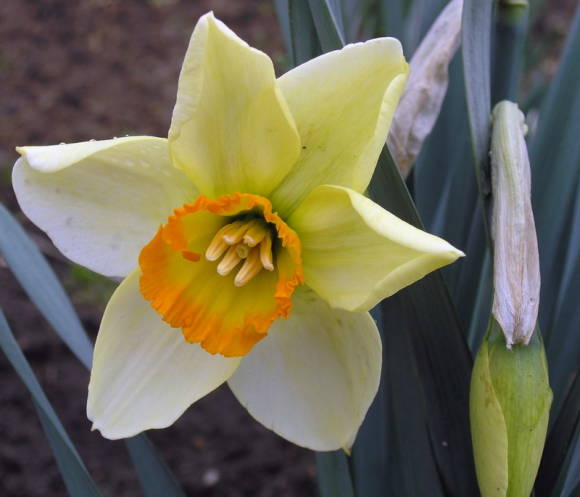 |
A coconut tree ... and now the sea shore with a palm tree slightly leaning towards the water is in front of your eyes. Let's take a closer look at this symbol of a serene beach holiday.
From botany to practice
Coconut palm(Cocos nucifera) - the only representative of the genus Coconut (Cocos) families Arecaceae, or Palm (Arecaceae, or Palmaceae). Such uniqueness is remarkable in itself, as if nature took care to distinguish this plant from all others.
The place of origin of the coconut palm has not been precisely established - it is assumed that its homeland was Southeast Asia (Malaysia). The area of the plant has expanded significantly thanks to the efforts of people and the spread of fruits with the help of river and sea currents. Now coconut trees occupy about 5 million hectares of land, of which more than 80% - in Southeast Asia.
Coconuts are able to remain viable for 110 days in salty sea water, during which time the fruit can be carried by the current 5000 km from its native shores. Due to the ability of coconuts to tolerate significant soil salinity, they can root directly on the seashore, where no other tree survives.
 |  |
Coconut palm is a tree 25-30 m high with a smooth trunk with annular scars from fallen leaves, usually slightly tilted to one side. The trunk, 15-45 cm thick in diameter, is usually slightly expanded at the base (up to 60 cm) due to the supply of nutrients. Thickening of the trunk with age does not occur in palms due to the absence of a cambial layer (as in all monocotyledonous plants) and, consequently, the absence of growth of wood in the form of annual rings.
The main root of the palm tree dies off, and its function is performed by many lateral adventitious roots, originating from the thickening of the base of the trunk. The horizontal roots go into the ground by 0.5 m, and the vertical ones reach a depth of 8 m. The adventitious roots live for about 10 years, after which they are replaced by new ones. They, like the trunk, are uniform along the entire length and do not have secondary thickening, which is typical for monocots. A dye is made from the roots of a coconut tree.
The leaves of the palm are huge, pinnately dissected, up to 5-6 m long and up to 1.5 m wide, attached directly to the trunk. The weight of such a sheet reaches 12-14 kg. The leaf consists of 200-250 leaves, each up to 80 cm long and up to 3 cm wide. The leaf grows for about a year and dies off after three years. Its base wraps around the trunk almost entirely, providing a strong mount to withstand strong offshore winds. About once a month, another new leaf appears on the tree, if unfavorable conditions do not delay its formation by 2-3 months. A palm tree has an average of 20 to 35 leaves. Palm leaves are used to weave everything that can be woven, from roofs and mats to handbags and jewelry.
 |  |
In favorable conditions, the coconut tree blooms all year round. Every 3-6 weeks, inflorescences appear in the leaf axils in the form of an axillary panicle up to 2 m long, collected from spikelets with male and female flowers. Female flowers in the form of yellow peas, 2-3 cm in size, are placed in the lower part of the spikelets closer to the base, which ensures more reliable fastening of the fruits. Their number reaches several hundred. Male flowers are found at the top of the spikelets, which allows them to expand their pollination zone. The number of male flowers is many times greater than the number of female flowers. For vigorous varieties, cross-pollination is characteristic, while for dwarf varieties, the height of which in adulthood reaches no more than 10 m, self-pollination. Usually 6-12 ovaries remain in the inflorescence. A good harvest is considered if 3-6 fruits of them ripen per year.
Cutting off the top of the unblown inflorescence, collect sweet palm juice containing 14.6% sugar. The brown crystalline raw palm sugar is obtained by evaporation.The juice left in the sun quickly ferments, turning into vinegar during the day. With slow fermentation, coconut wine is obtained, it is characterized by a low alcohol content, while having a refreshing and invigorating effect. It tastes similar to light table grape wine.
To get the harvest sooner
The coconut tree begins to bear fruit at the age of 6 years, gradually increasing its yield to a maximum by 15 years and decreasing it only after 50-60 years due to the aging of the tree. An adult tree gives an average of about 100 fruits per year, under favorable conditions, the yield can be increased to 200 fruits per tree.
 |
As a result of long-term cultivation of the coconut palm, a large number of varieties have been created, which are divided into 2 groups: vigorous (common) and undersized (dwarf). They differ significantly in biological and production characteristics.
The bred dwarf varieties have a shorter productive period - 30-40 years, but the first fruits appear on them in the 4th year of life, when the tree has only 1 meter of growth. By the age of 10, the coconut tree is capable of producing the maximum yield. The fruits of dwarf palms are smaller than those of vigorous ones, but it is much easier to harvest from a maximum height of 10 m than from trees 20-25 m high.
Fruits of vigorous varieties have a round, almost spherical shape, about 30-40 cm in diameter and weighing up to 3 kg. Falling from a height of 20 m, they acquire a terrible destructive force. Harvesting is carried out all year round with a frequency of 2 months. An experienced picker can collect up to 1,500 nuts a day, for this he needs to masterfully wield a long pole with a knife at the end. Less productive is the method of harvesting with climbing palm trees to a height of 20 m. On the plantations of about. Samui (Thailand), where the supply of coconuts reaches 40 thousand pieces per year, began to be used for harvesting trained monkeys, each of which is able to collect twice as many nuts as a person, due to the speed of climbing. Collecting coconuts by monkeys has become a tourist attraction, which gives additional profit to the plantations.
From shell to kernel
 |
Plucked coconuts, like all other parts of this extremely healthy palm, are used in their entirety: from shell to kernel. Europeans are used to seeing brown hairy balls in supermarkets, but coconuts on a palm tree look very different. The fruit is covered with a dense, smooth green shell, which may turn slightly yellow or red over time. This outer shell is called the exocarp by botany. Under it is a thick layer (2-15 cm) of brown fibers. This layer - the mesocarp - is scraped off along with the exocarp immediately after the coconuts are on the ground. Before we part forever with these two layers, peeling them off the fruit, note their extreme importance in the spread of the species, and see how this raw material is used. If the layer of fibers ensures the buoyancy of fruits that fall into the water and are carried away by the current, and protects the seed from overheating in the tropics, then the water-impermeable endocarp serves as a reliable capsule. In unripe young fruits, the mesocarp is edible. After the exocarp and mesocarp are removed, the fruit acquires the familiar round brown “nut” appearance overgrown with brown fibers. Note that the usual phrase "coconut" is incorrect from the point of view of botany. In fact, the fruit is a drupe.
 |
The fibrous layer - coir or coir - is an important raw material, for the sake of which part of the crop is harvested unripe. Coir is not subject to decay, and this property is invariable at any humidity and temperature, it perfectly retains its shape and serves for an exceptionally long time. This material is used in the furniture industry as an elite filler for mattresses and upholstered furniture; mats, ropes and rough fabrics are woven from it. The main producers of coir in the world are India and Sri Lanka.
The next coconut shell is endocarp - a very tough brown "nut shell" that we can easily recognize as coconuts on grocery store shelves. The hard shell covers a single seed, which consists of an embryo and endosperm - solid and liquid. From the inside, the "shell" is covered with a layer of solid white endosperm 1-2 cm thick, and the inner cavity is filled with liquid endosperm. When we buy coconut in the store, we expect to get a sweetish refreshing juice (ie liquid endosperm) and a layer of white fatty solid endosperm lining the "shell" from the inside, which is familiar to us from coconut flakes, which are widely used in the confectionery industry. It is from this layer that valuable raw materials are obtained - copra. A thousand nuts produce about 200 kg of copra. The annual production of copra in the world is about 5 million tons. The Philippines and Indonesia are leading in this production.
 |

Before we get to the edible seed, let's look for a "shell" application. In industrial production, "nut shells" with fiber residues are crushed and a coconut substrate is obtained, which is used for growing plants. It has high moisture capacity and air permeability, biologically pure and does not rot. These properties also make it possible to improve the composition of any soil when mixed with it. They sell coconut substrate in the form of briquettes: 5 kg of pressed substrate turns into 80 liters of full-fledged soil when soaked.
Endocarp has long been used to make dishes. In Russia, they first learned about coconuts in the 17th century under Peter I, who brought from Europe a goblet of coconut shells. Since coconuts were considered an "Indian curiosity" in Europe, the price of this curiosity was imperial, as was its design. This can be confirmed by the exhibits of historical museums around the world.
 |  |
| Coconut cups. XVII century. Silver, gilding, chasing, coconut, carving |
At the base of the fruit, three "eyes" are clearly visible, which do not overgrow with fibers and make the fruit look like a monkey's face. These are pores formed in the place of three carpels. Three pores correspond to the location of three ovules, of which only one develops into a seed. The pore above the forming seed is easily permeable, it is through it that the sprout breaks out, while the other two are impenetrable.
 |
Occasionally there are coconuts in which all three pores are impenetrable. In such "tightly corked" fruits, the embryo can turn into a unique "coconut pearl". A beautiful white, smooth and hard shell, reminiscent of mother-of-pearl, covers the embryo, turning it into a jewel. Coconut pearls are considered the only gemstone in the world of plant origin. So everyone who opens a coconut has a chance to find this miracle of nature in it - pearls, much rarer than sea pearls. True, the likelihood of such luck is extremely small and is approximately 1 chance in 7500 fruits. One of the famous coconut pearls is exhibited at Fairchild Botanical Garden (Miami, USA). Like any unique gem, she has a proper name - "Maharaja".
Natural saline
Let's go back to the contents of the opened fruit. Before cracking the nut, drain 0.5-1 liters of refreshing and always cool (thanks to the insulating layer of mesocarp) liquid through a hole in the permeable pore. To obtain the maximum amount of coconut water, the fruits are harvested in the fifth month of ripening. Its consumption increases lactation in lactating women and helps dissolve kidney stones. As it matures, the sugar content of the liquid endosperm rises. Coconut water is sterile and in a number of parameters is close to blood serum, being a natural saline solution. During World War II, coconut water was used in emergency cases as a blood substitute for blood transfusions.It contains a large amount of potassium (about 294 mg per 100 g) and natural chlorides (118 mg per 100 g) with a low sodium content. Nowadays, coconut water is more often sold in canned form, because its shelf life is small and is 2-3 days in the refrigerator.
 |  |

A delicacy for millionaires
As the fruit ripens, copra begins to accumulate and release oil into the liquid endosperm, which causes it to become cloudy as a result of the formation of an emulsion, followed by its thickening. Subsequently, the amount of proteins and fats increases, and by the 8-9 month of ripening, the seed forms a solid endosperm. By 10-12 months, the fruit is fully ripe and ready to germinate.
Fruit germination begins with the emergence of a sprout from the pore, while primary roots begin to develop in the fibrous layer. At first, the sprout covers the "heart of the palm" - the apical bud. The outside is covered with white edible down, which tastes like marshmallows. From the apical buds, a delicious salad is prepared, which is called the "salad of millionaires" for the high cost of this dish, because each portion of this salad costs the life of the plants that have lost their "heart". After 3-9 months, the first leaf appears, and the adventitious roots emerge from the mesocarp.
 |
The palm tree does not yet have a trunk, it consists of a "nut" with a green bundle of leaves sticking out of it and an apical bud. Only after the kidney gains strength and grows to a certain size, the trunk will begin to grow. It turns out that at first the palm tree grows "wide", and then rises "in height".
As practice has shown, the most productive palms are the first to germinate, in this regard, it is recommended to discard all fruits that have not sprouted within 5 months.
Young palms are planted in the ground at the age of 6-18 months. At the same time, the nut is left, because a young plant up to three years old continues to use the reserves of nutrients it contains. Planting can be done all year round, excluding the dry season. The plant is photophilous, so planting schemes should take into account illumination, soil fertility and the growth characteristics of a particular variety. Coconut palm withstands groundwater salinity up to 3%. The planting density on the plantation is 100-160 specimens / ha. The large distance between the trees (9 m) allows the spreading leaves of each palm to receive their share of sunlight.
Having planted the next generation of palms, let's return to the freshly harvested crop
After the coconuts are on the ground, they are split and dried in the sun. The white fatty endosperm is separated from the "shell". The collected raw materials are dried in the sun or in ovens to protect the product from bacteria and fungi, and copra is obtained, which contains about 70% oil. Coconut oil is extracted from copra by cold pressing or hot pressing. The resulting thick, fatty liquid is called thick coconut milk, which is used for desserts and sauces. It consists of 27% fat, 6% carbohydrates and 4% protein and contains small amounts of vitamins B1, B2, B3, C. Fresh coconut milk tastes like cow's milk and can be used to replace animal milk. The energy value of such milk is 230 kcal / 100 g. The butter from the cream settled after cold pressing is much more valuable than that obtained after hot pressing.
With cold pressing, the copra mass is repeatedly immersed in water and squeezed again, obtaining liquid coconut milk. It is used in Southeast Asian cooking as an addition to soups and other foods. The cake left over after oil production is fed to livestock.
Copra is used in the confectionery industry as the familiar coconut flakes. The high fat content determines its use in soap making, cooking, in the production of margarine, cosmetics, medicinal ointments and suppositories. Let's take a look at the properties of coconut oil and see why manufacturers use it so actively.
 |
Coconut oil
The melting point of coconut oil is +25 ... + 27 ° C, at lower temperatures it takes the form of a granular mass. It has a long shelf life and practically does not oxidize due to its high content of saturated fatty acids. The exceptional thermal stability of the oil, which does not lose its properties when heated to high temperatures, allows it to be effectively used in cooking for the preparation of fried and deep-fried dishes, in particular for making popcorn.
Coconut oil has anti-inflammatory, antifungal, bactericidal effects on the body. It promotes the excretion of bile, prevents the development of obesity and urolithiasis, and supports the normal functioning of the thyroid gland. Lauric acid contained in coconut normalizes cholesterol metabolism in the body.
Coconut oil is almost irreplaceable in cosmetics. It has a healing and softening effect on the skin, promotes wound healing. Its beneficial properties are due to the presence of saturated fatty acids in its composition (lauric - 50% of the total acid content, myristic - 20%, palmitic - 9%, capric - 5%, caprylic - 5%, oleic - 6%, stearic - 3% and polyunsaturated fatty acids - linoleic Omega-6 and linolenic Omega-3 acids - 1% each). Only refined oil can be used in cosmetic preparations. In face care products, its content should not exceed 10%, and in body care products - 30%.
Such a set of positive properties, together with its low cost, makes coconut oil irresistibly attractive for industrial production. No wonder the coconut palm has long been attributed to the main types of oilseeds in the world economy. The main global producers of coconut oil are now Malaysia, India, Thailand, the Philippines, Sri Lanka and Indonesia. Russia imports coconut oil mainly from India.
Now we can appreciate all the possibilities of using the coconut palm and its fruits and make sure that this plant is not without reason considered the “tree of life” in Southeast Asia.
 |
